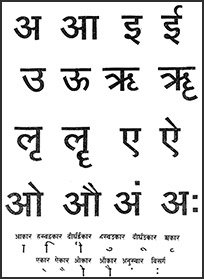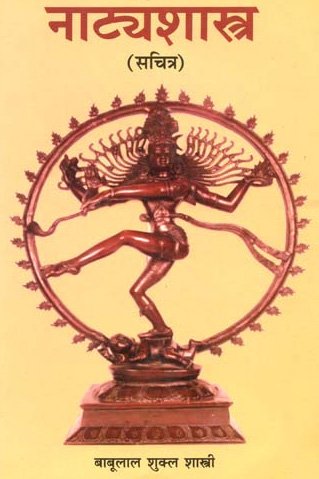Asambhava, Asaṃbhava: 17 definitions
Introduction:
Asambhava means something in Buddhism, Pali, Hinduism, Sanskrit, Jainism, Prakrit, Marathi, Hindi. If you want to know the exact meaning, history, etymology or English translation of this term then check out the descriptions on this page. Add your comment or reference to a book if you want to contribute to this summary article.
Alternative spellings of this word include Asambhav.
In Hinduism
Vyakarana (Sanskrit grammar)
Source: Wikisource: A dictionary of Sanskrit grammarAsaṃbhava (असंभव).—Impossibility of occurrence (used in connection with an operation); cf नावश्यं द्विकार्ययोग एव विप्रतिषेधः । किं तर्हि । असंभवेपि । (nāvaśyaṃ dvikāryayoga eva vipratiṣedhaḥ | kiṃ tarhi | asaṃbhavepi |) M. Bh. I.1.12 Vārt. 3; (2) impossibility of a statement, mention, act etc. cf. असंभवः खल्वपि अर्थादेशनस्य (asaṃbhavaḥ khalvapi arthādeśanasya) M. Bh. on II.1.1.

Vyakarana (व्याकरण, vyākaraṇa) refers to Sanskrit grammar and represents one of the six additional sciences (vedanga) to be studied along with the Vedas. Vyakarana concerns itself with the rules of Sanskrit grammar and linguistic analysis in order to establish the correct context of words and sentences.
Kavyashastra (science of poetry)
Source: Shodhganga: The Kavyavilasa of Ciranjiva Bhattacarya (kavyashastra)Asambhava (असम्भव) refers to one of the 93 alaṃkāras (“figures of speech”) mentioned by Cirañjīva Bhaṭṭācārya (fl. 17th century) in his Kāvyavilāsa and is listed as one of the 89 arthālaṃkāras (figure of speech determined by the sense, as opposed to sound).—Ancient Ālaṃkārikas like Bhāmaha, Udbhaṭa, Daṇḍin and Vāmana and modern Ālaṃkārikas like Ruyyaka, Mammaṭa, Viśvanātha and Jagannātha have not admitted asambhava. This figure of speech is found to be treated first by Jayadeva in his Candrāloka (V/76). Appayyadīkṣita has also treated it as a separate figure in his kuvalayānanda (P. 208).
Following Jayadeva and Appayya, Cirañjīva defines asambhava as—“asambhavo’rthaniṣpattāvasambhāvyatvavarṇanam”. This definition is actually the same with the definition given by Jayadeva and slightly modified from the definition of kuvalayānanda. When one action is accomplished then if the impossibility of that action is described by the poet, it is the figure asambhava. After the completion of an action if it is said that the impossible thing has taken place it is that figure asambhava.
Example of the asambhava-alaṃkāra:—
bāṇena yena nihato bhāle mahiṣasattamaḥ |
paśya devasya māhātmyaṃ tenaivā’sya hayo hataḥ ||“Behold the power of destiny, by that very shaft which has killed the big buffalo after hitting its forehead, his horse is killed”.
Notes: In this verse after the death of the horse, the impossibility of its death is a subject of discussion. The charioter has thrown his shaft to kill the buffalo. It strikes the forehead of the buffalo, but it is astonishing that the same shaft has killed the horse connected with the chariot. This is simply impossible. This impossibility is expressed by the word paśya devasya māthatṃyam (ibid.). So it is an example of asambhava. Actually when the shaft had striken the forehead of the buffalo it was moving towards the front of the chariot, but it suddenly turned backward; the shaft piercing the forehead and coming out through its backside wounded the head of the horse and it became dead.

Kavyashastra (काव्यशास्त्र, kāvyaśāstra) refers to the ancient Indian tradition of poetry (kavya). Canonical literature (shastra) of the includes encyclopedic manuals dealing with prosody, rhetoric and various other guidelines serving to teach the poet how to compose literature.
Purana and Itihasa (epic history)
Source: archive.org: Shiva Purana - English TranslationAsaṃbhava (असंभव) refers to an “impossible (proposal)”, according to the Śivapurāṇa 2.3.25 (“The seven celestial sages test Pārvatī”).—Accordingly, as Pārvatī said to the seven Sages: “O great sages, listen to my words with hearty affection. I am saying only what I thought in my own way. On hearing my words you will laugh at me considering my proposal impossible [i.e., asaṃbhava]. O Brahmins, I hesitate in revealing it but what can I do? [...]”.

The Purana (पुराण, purāṇas) refers to Sanskrit literature preserving ancient India’s vast cultural history, including historical legends, religious ceremonies, various arts and sciences. The eighteen mahapuranas total over 400,000 shlokas (metrical couplets) and date to at least several centuries BCE.
In Buddhism
Mahayana (major branch of Buddhism)
Source: academia.edu: A Study and Translation of the GaganagañjaparipṛcchāAsaṃbhava (असंभव) refers to “non-existence”, according to the Gaganagañjaparipṛcchā: the eighth chapter of the Mahāsaṃnipāta (a collection of Mahāyāna Buddhist Sūtras).—Accordingly, as the Bodhisattva Gaganagañja said to the Brahmā Prabhāvyūha: “Brahmā,
everything is included in a single word. Why is that? Because the word ‘emptiness’ is a single word, and everything is included in emptiness; the word ‘signlessness’ is a single word, and everything is included in signlessness; the word ‘wishlessness’ is a single word, and everything is included in wishlessness. In the same manner, the words ‘the unconditioned, non-desire, peace, non-basis, the absolute truth, suchness, the limit of reality, non-existence (asaṃbhava), and unbornness, each of them is a single word, [and everything is included in them]; the word ‘extinction’ is a single word, and everything is included in extinction. [...]”.

Mahayana (महायान, mahāyāna) is a major branch of Buddhism focusing on the path of a Bodhisattva (spiritual aspirants/ enlightened beings). Extant literature is vast and primarely composed in the Sanskrit language. There are many sūtras of which some of the earliest are the various Prajñāpāramitā sūtras.
In Jainism
Jain philosophy
Source: archive.org: Anekanta Jaya Pataka of Haribhadra SuriAsambhava (असम्भव, “impossibility”) refers to one of the “faults” (doṣa) mentioned in the Tarkarahasyadīpikā (p 93b).
-
Languages of India and abroad
Marathi-English dictionary
Source: DDSA: The Molesworth Marathi and English Dictionaryasambhava (असंभव).—m (S) Incongruity, inconsistency, absurdity, incompatibility. Hence (by implication), Improbability or impossibility. N.B. This second sense is the common sense.
Marathi is an Indo-European language having over 70 million native speakers people in (predominantly) Maharashtra India. Marathi, like many other Indo-Aryan languages, evolved from early forms of Prakrit, which itself is a subset of Sanskrit, one of the most ancient languages of the world.
Sanskrit dictionary
Source: DDSA: The practical Sanskrit-English dictionaryAsaṃbhava (असंभव).—a. Improbable, unlikely, inconsistent; असंभवं हेममृगस्य जन्म (asaṃbhavaṃ hemamṛgasya janma) H.1.26,
-vaḥ 1 Non-existence; अन्य- दाहुरसंभवात् (anya- dāhurasaṃbhavāt) Vāj.4.1; Iśa. Up.13; रामेणापि कथं न हेमहरिणस्यासंभवो लक्षितः (rāmeṇāpi kathaṃ na hemahariṇasyāsaṃbhavo lakṣitaḥ) Pañcatantra (Bombay) 2.4; Śiśupālavadha 16.34.
2) Improbability, impossibility.
-vā, -vam An extra-ordinary event.
Source: Cologne Digital Sanskrit Dictionaries: Shabda-Sagara Sanskrit-English DictionaryAsambhava (असम्भव).—mfn.
(-vaḥ-vā-vaṃ) 1. Improbable, unlikely, inconsistent. 2. Nonexistent. nf.
(-vaṃ-vā) 1. Any extraordinary event. 2. Non existence. E. a neg. sambhava production.
Source: Cologne Digital Sanskrit Dictionaries: Benfey Sanskrit-English DictionaryAsaṃbhava (असंभव).—I. m. 1. non-existence, Böhtl. Ind. Spr. 872; impossibility, [Pañcatantra] ii. [distich] 4. 2. omission, [Mānavadharmaśāstra] 11, 27. Ii. adj. impossible, [Hitopadeśa] i. [distich] 27, M.M. Apunaḥsambhava, i. e.
Asaṃbhava is a Sanskrit compound consisting of the terms a and saṃbhava (संभव).
Source: Cologne Digital Sanskrit Dictionaries: Cappeller Sanskrit-English DictionaryAsaṃbhava (असंभव).—1. [masculine] non-existence, absence, want; impossibility, absurdity.
--- OR ---
Asaṃbhava (असंभव).—2. [adjective] not existing, absent, wanting, impossible.
Source: Cologne Digital Sanskrit Dictionaries: Monier-Williams Sanskrit-English Dictionary1) Asaṃbhava (असंभव):—[=a-saṃbhava] m. ‘non-existence’, destruction, [Vājasaneyi-saṃhitā xl, 10]
2) [v.s. ...] non-happening, cessation, interruption, [Manu-smṛti xi, 27]
3) [v.s. ...] absence of, want, [Manu-smṛti; Mahābhārata] etc.
4) [v.s. ...] impropriety, inconsistence, impossibility, [Kātyāyana-śrauta-sūtra; Manu-smṛti etc.]
5) [v.s. ...] non-coition, impotence, [Āpastamba-gṛhya-sūtra]
6) [v.s. ...] mfn. ‘non-happening’, inconsistent, impossible.
Source: Cologne Digital Sanskrit Dictionaries: Yates Sanskrit-English DictionaryAsambhava (असम्भव):—[a-sambhava] (vaḥ-vā-vaṃ) a. Improbable. n. Extraordinary event.
[Sanskrit to German]
Sanskrit, also spelled संस्कृतम् (saṃskṛtam), is an ancient language of India commonly seen as the grandmother of the Indo-European language family (even English!). Closely allied with Prakrit and Pali, Sanskrit is more exhaustive in both grammar and terms and has the most extensive collection of literature in the world, greatly surpassing its sister-languages Greek and Latin.
Hindi dictionary
Source: DDSA: A practical Hindi-English dictionaryAsaṃbhava (असंभव) [Also spelled asambhav]:—(a) impossible, impracticable.
...
Kannada-English dictionary
Source: Alar: Kannada-English corpusAsaṃbhava (ಅಸಂಭವ):—[adjective] not likely to happen or be true; unlikely; improbable.
--- OR ---
Asaṃbhava (ಅಸಂಭವ):—[noun] (rhet.) a fig. of speech describing an improbable event or happening.
Kannada is a Dravidian language (as opposed to the Indo-European language family) mainly spoken in the southwestern region of India.
Nepali dictionary
Source: unoes: Nepali-English DictionaryAsambhava (असम्भव):—adj. 1. impossible; improbable; 2. inconceivable;
Nepali is the primary language of the Nepalese people counting almost 20 million native speakers. The country of Nepal is situated in the Himalaya mountain range to the north of India.
See also (Relevant definitions)
Partial matches: A, Shambhava.
Starts with: Asambhavana, Asambhavaniya, Asambhavapattra, Asambhavat, Asambhavayant.
Ends with (+108): Abjasambhava, Abujasambhava, Adityasambhava, Aharasambhava, Ambhojasambhava, Amritasambhava, Amshamshasambhava, Amshasambhava, Anandasambhava, Anaphasambhava, Andasambhava, Arthasambhava, Ashapurasambhava, Ashasambhava, Atmasambhava, Atmasambhavasambhava, Attasambhava, Bhangasambhava, Bhavasambhava, Bhavasambhava.
Full-text: Asambhavaniya, Amritasambhava, Asambhavya, Asambhav, Asambhavitopama, Asambhuta, Asambhavyam, Asambhavita, Asambhuti, Asambhavana, Ativyapti, Avyapti, Dosha, Alamkara, Vacyalankara, Vyakarana.
Relevant text
Search found 15 books and stories containing Asambhava, A-sambhava, A-saṃbhava, Asaṃbhava; (plurals include: Asambhavas, sambhavas, saṃbhavas, Asaṃbhavas). You can also click to the full overview containing English textual excerpts. Below are direct links for the most relevant articles:
Bhakti-rasamrta-sindhu (by Śrīla Rūpa Gosvāmī)
Verse 2.1.241 < [Part 1 - Ecstatic Excitants (vibhāva)]
Verse 3.2.111 < [Part 2 - Affection and Service (dāsya-rasa)]
Taittiriya Upanishad Bhashya Vartika (by R. Balasubramanian)
Verse 2.330 < [Book 2 - Brahmavallī]
Chaitanya Bhagavata (by Bhumipati Dāsa)
Verse 3.9.36 < [Chapter 9 - The Glories of Advaita]
Verse 1.13.106 < [Chapter 13 - Defeating Digvijayī]
Verse 3.9.207 < [Chapter 9 - The Glories of Advaita]
Vakyapadiya of Bhartrihari (by K. A. Subramania Iyer)
Verse 2.67-68 < [Book 2 - Vākya-kāṇḍa]
Verse 3.1.5 < [Book 3 - Pada-kāṇḍa (1): Jāti-samuddeśa (On the Universal)]
Bhajana-Rahasya (by Srila Bhaktivinoda Thakura Mahasaya)
Text 20 < [Chapter 7 - Saptama-yāma-sādhana (Pradoṣa-kālīya-bhajana–vipralambha-prema)]
Text 13 < [Chapter 7 - Saptama-yāma-sādhana (Pradoṣa-kālīya-bhajana–vipralambha-prema)]
Brahma Sutras (Shankara Bhashya) (by Swami Vireshwarananda)
Chapter II, Section III, Adhikarana III < [Section III]